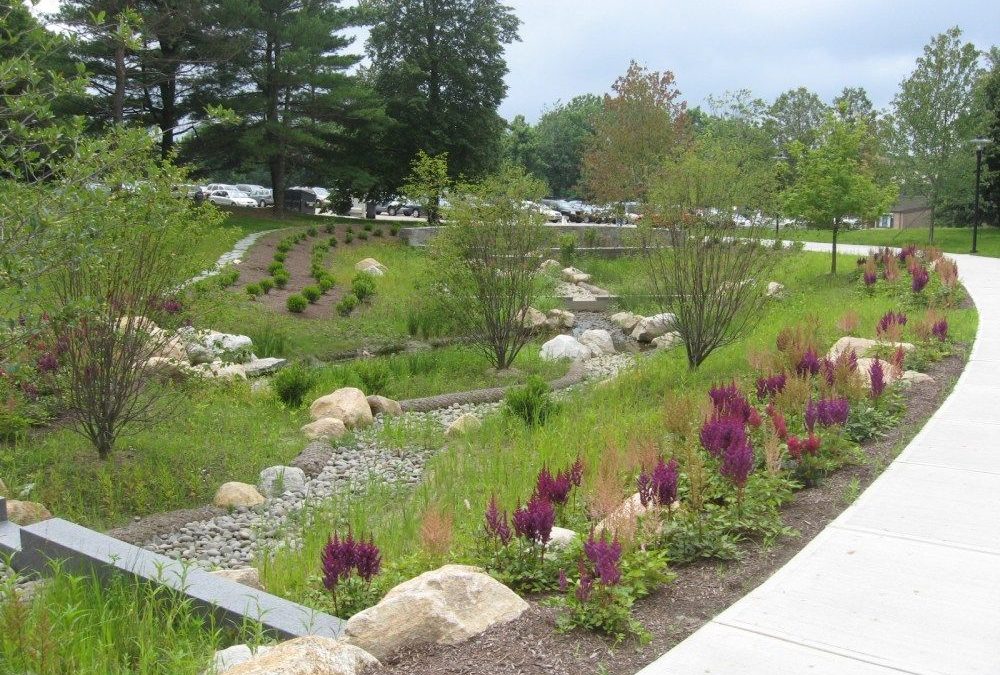
by Kamal Obeid | Nov 6, 2018 | Landtech Blog, The Way of the Land
Bioretention areas, also sometimes called rain gardens, are the post-construction stormwater treatment measure of choice for commercial developments in the Bay Area. Civil engineering design often utilizes this Low Impact Development (LID) practice that combines aesthetic landscaping with engineered stormwater management systems designed to remove pollutants through natural processes. According to the San Francisco Bay Water Quality Control Board, “In the San Francisco Bay watershed, urbanization and agricultural runoff is generally considered to be the largest source of pollutants to aquatic systems.” Stormwater in cities picks up debris, oil, chemicals, etc. from impervious streets and sidewalks and washes it down the storm drain and into surrounding bodies of water rather than sinking into the ground like rainfall does in an undeveloped area. According to the C.3 Technical Guidance Handbook, a bioretention area is:
“…designed to have a surface ponding area that allows for evapotranspiration and to filter water through 18 inches of engineered biotreatment soil. After the water filters through the engineered soil, it encounters a 12-inch layer of rock in which an underdrain is typically installed. Bioretention areas may be lined or unlined depending on the hydraulic conductivity rate of the underlying soils.”
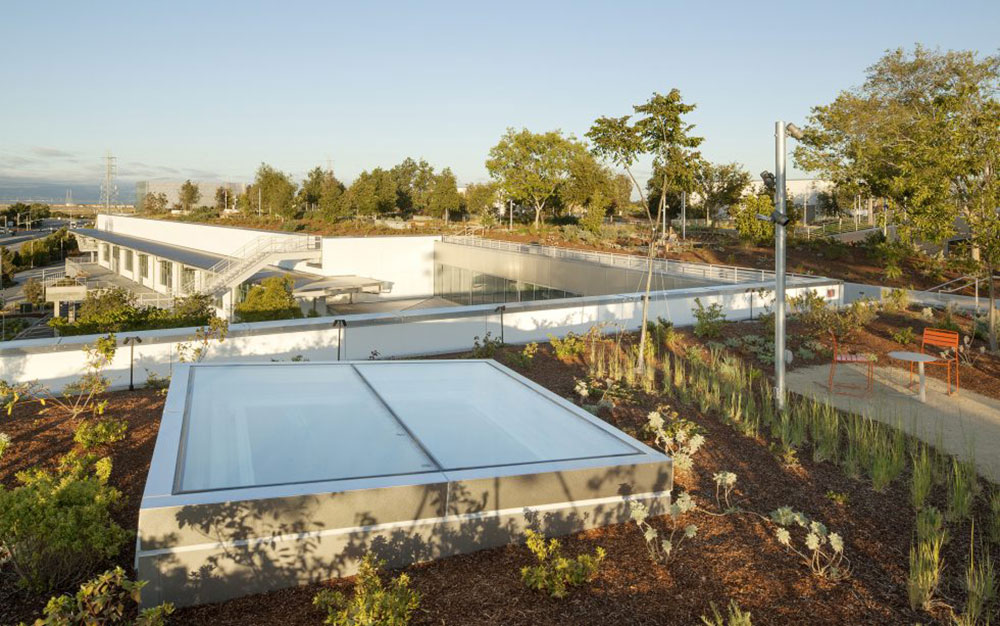
by Kamal Obeid | Mar 23, 2018 | Landtech Blog, The Way of the Land
The Bay Area is known for its environmentally conscious mindset – that of its citizens, environmental policies and the kind of development the region attracts. Initiatives have developed at municipal levels, such as San Francisco’sban on plastic checkout bags in 2013 and San Jose’s sustainable city plan. Private companies have also taken similar initiatives, think Facebook’s campus with its 9-acre green roof and Salesforce East’s Platinum LEED status remind us that sustainability is here to stay. Along with environmentally-intelligent development and the regulations that govern it, the need for equitable water management practices at both public and private levels is a growing issue. Currently, the Bay Area’s approach to water management is steadily improving with the help of the region’s development standards and the increase in our collective environmental awareness.
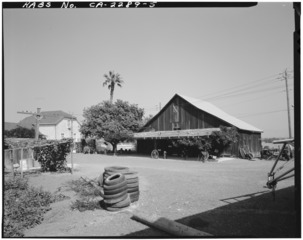
by Kamal Obeid | Nov 1, 2017 | Landtech Blog, The Way of the Land
I first started as a civil engineer during the 1980s. At that time, Fremont, California, located in the East Bay of California’s San Francisco Bay Area, was a sleepy suburban community in the backdrop of the larger region. The not-too-distant Silicon Valley was in the throes of a recession. The historical farming community was evolving with acres of land being developed into subdivisions and ancillary commercial strip center development. Large areas of pristine open space were under threat from encroaching suburbia. The City of Fremont government, actively dealing with development pressure and market forces, was also beginning to steer the City away from unplanned, market-driven development.
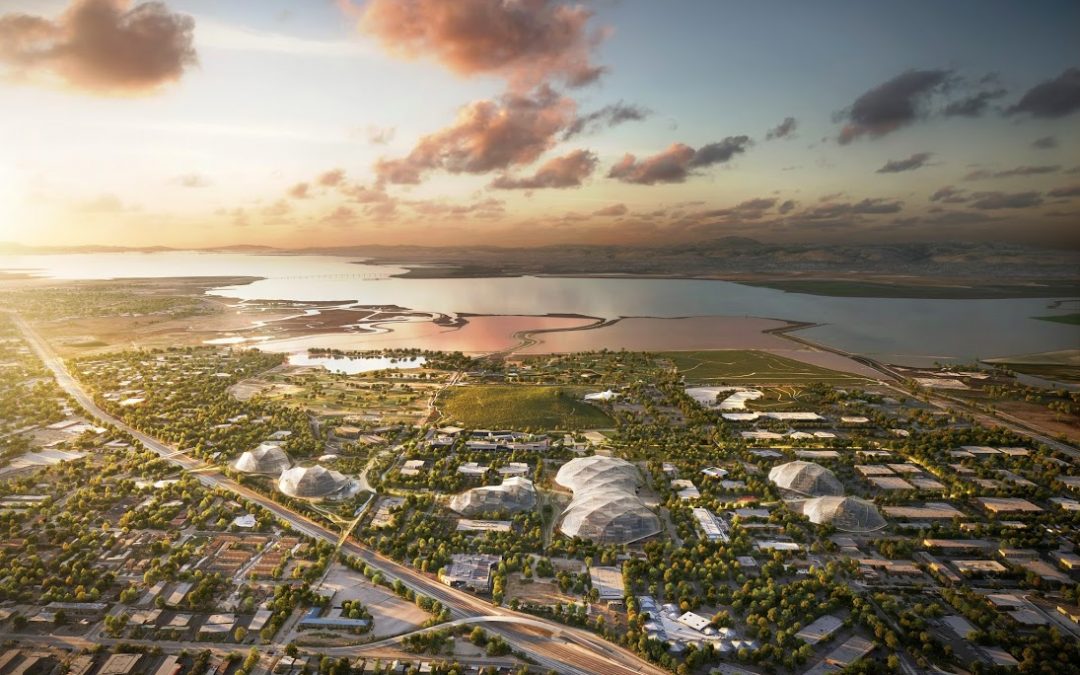
by Kamal Obeid | May 15, 2016 | Landtech Blog, The Way of the Land
Can the San Francisco Bay Area handle the growth? The Bay Area region is one of the most in-demand places in the country to live, especially for professionals in the technology industry. After all, it’s the place where tech companies come to grow, and subsequently, the region attracts great talent. However, the increased demand has contributed to a housing shortage, making it unaffordable for many, and it’s caused other problems such as traffic congestion and long commute times. Also, environmental conditions are much harder to predict with a warming climate. From a civil engineering perspective, the growth can last if development is well-planned and sustainable.
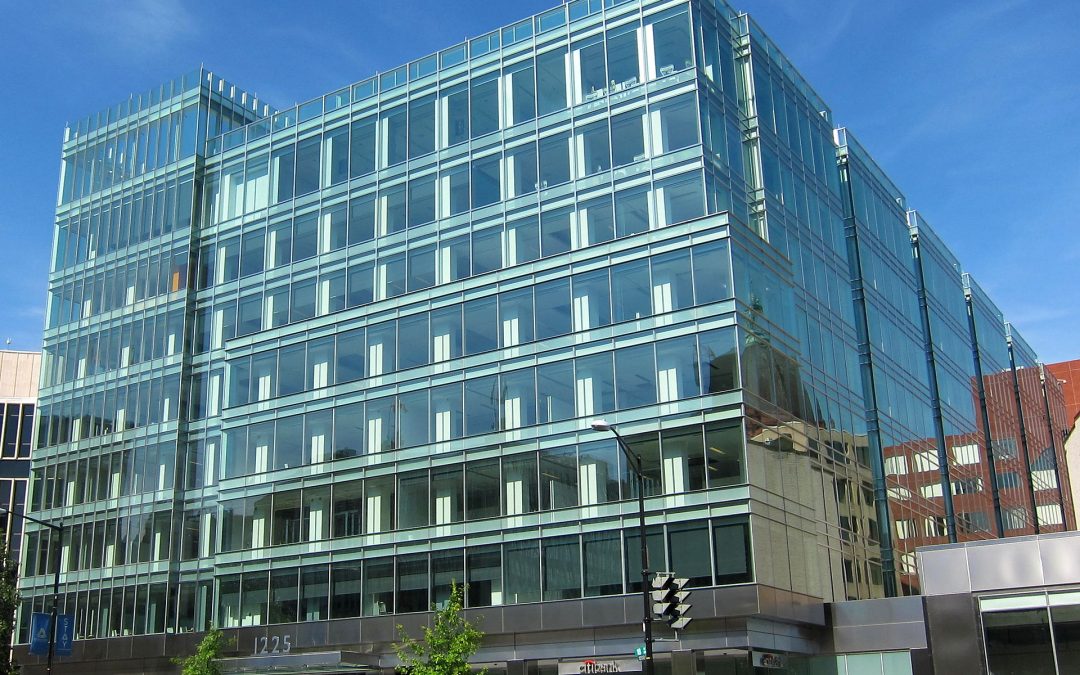
by Kamal Obeid | May 4, 2016 | Landtech Blog, The Way of the Land
Peter Akinosho, a civil engineering student at the University of Georgia, spoke about why he chose the profession: “[Civil engineers] do what we do so people don’t have to worry about their basic needs.” Paramount among these needs is health. We are building structures for tomorrow’s generations, who are more conscious about the benefits of maintaining an active lifestyle, even at work. Especially in the realm of Bay Area green building, tech giants are building headquarters with green roofs equipped for walking meetings, and offer daylighting, yoga, and healthy food. To remain competitive for clients, we developers, architects, and engineers must work together to design and build developments that are not only sustainable but also promote the health of the people who use them.





